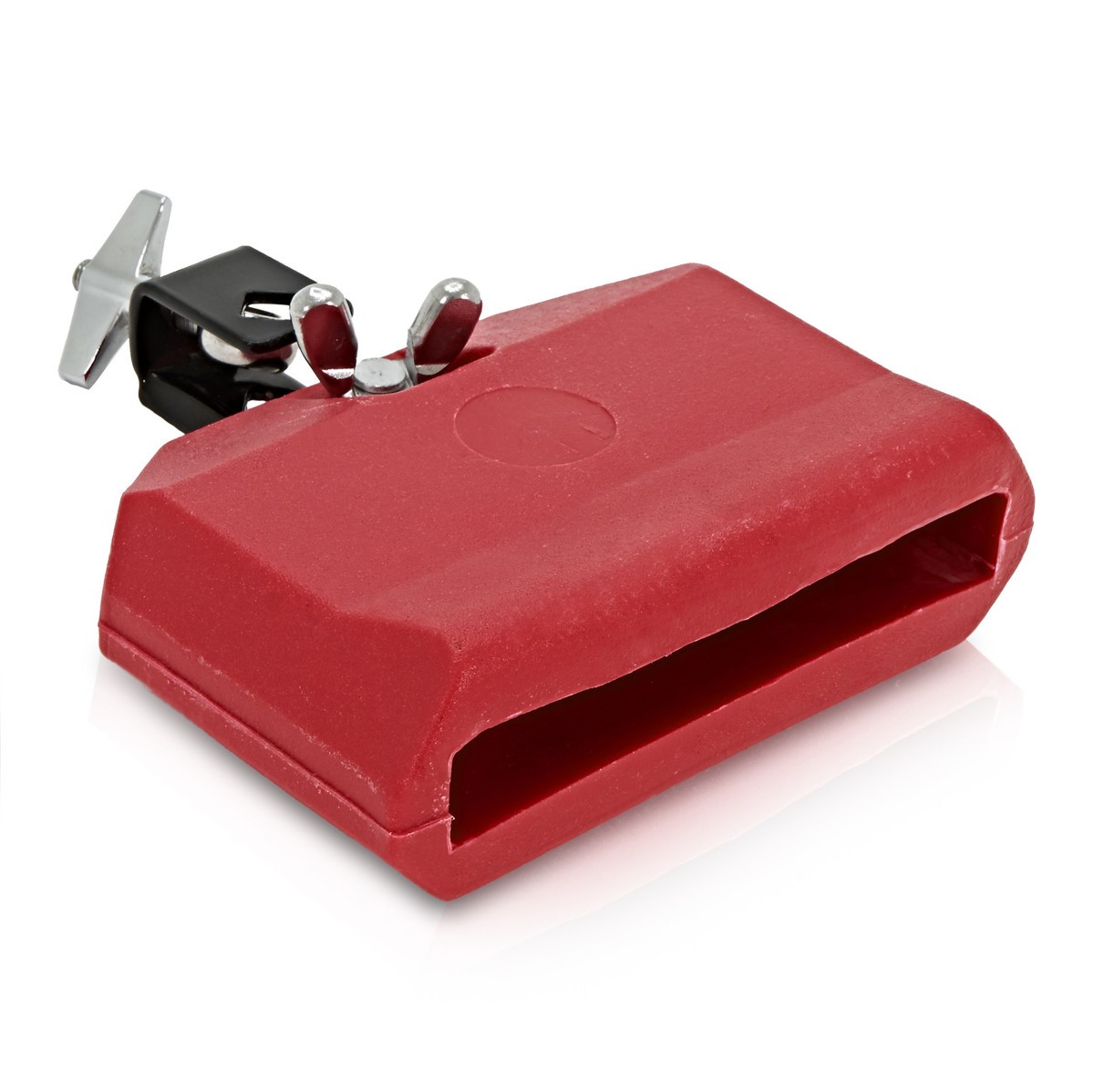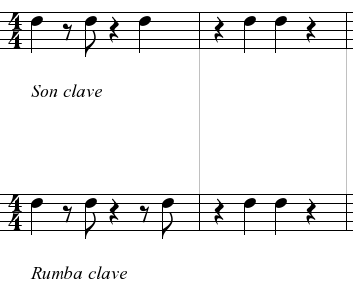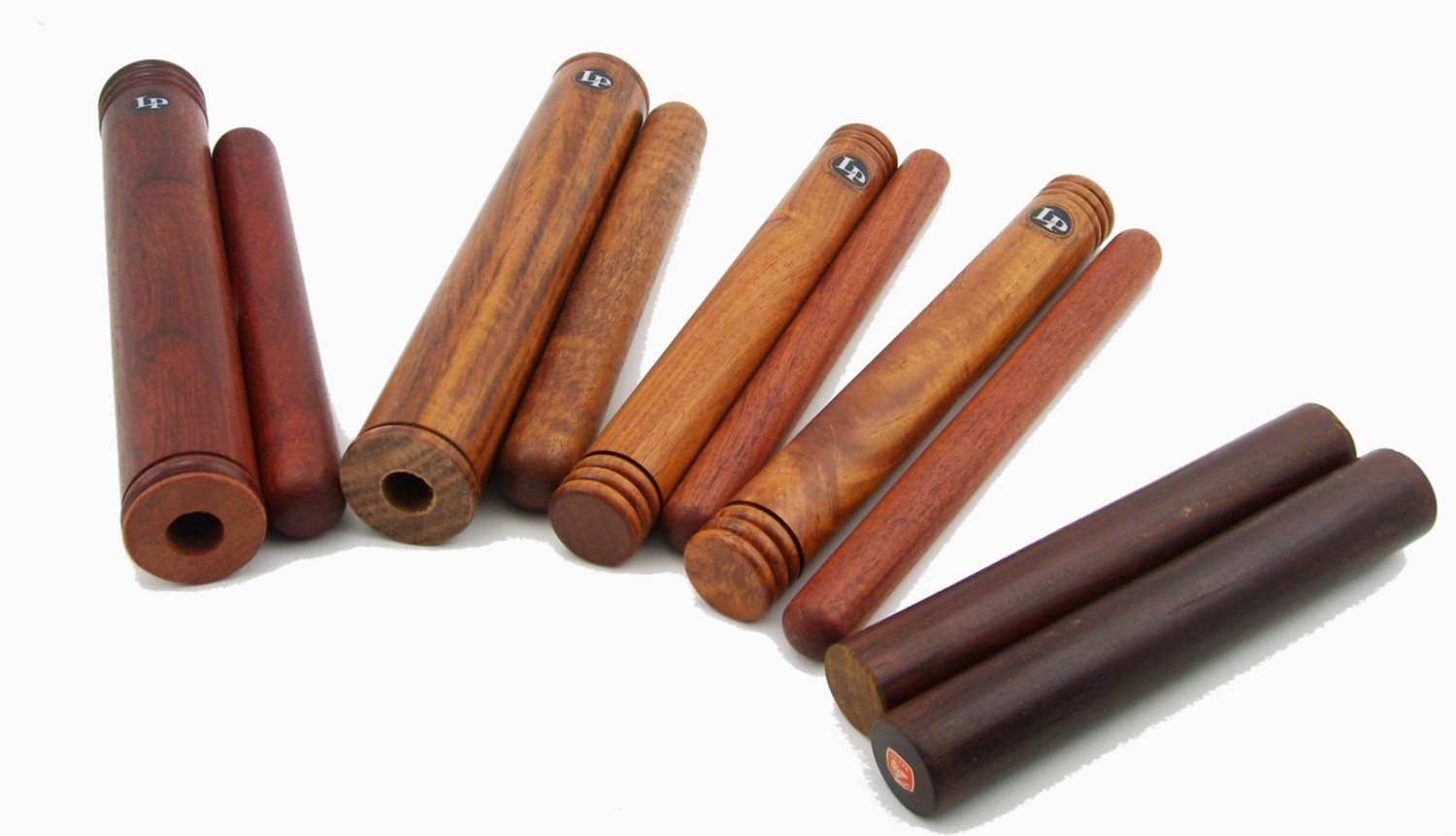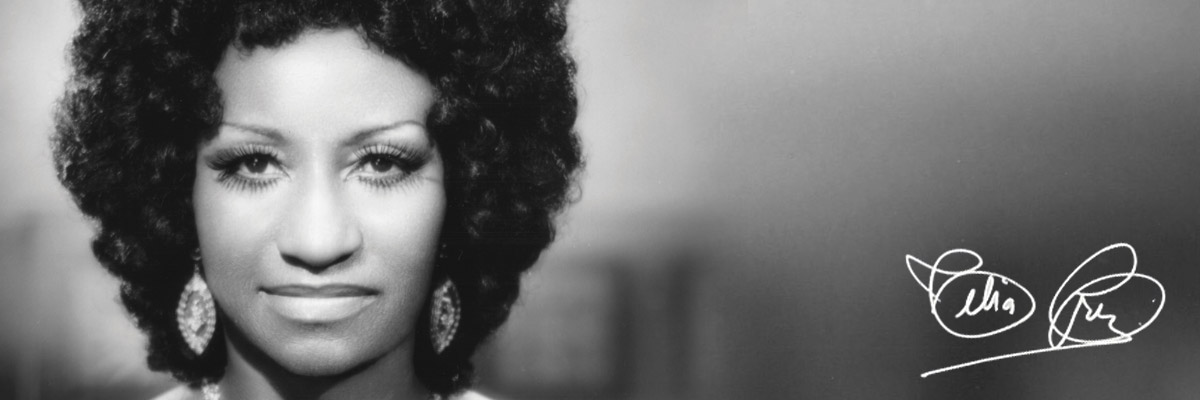Het is ‘Wist je dat?’ –woensdag!
(Geschreven door: Roberto Gutierrez)
We willen graag met jullie allerlei info en weetjes delen over salsa/latin cultuur: de muziek, de dans, de artiesten en heel belangrijk de geschiedenis. Voor sommigen zullen bepaalde feitjes al bekend zijn en voor anderen totaal niet. Het gaat erom dat iedereen iets meekrijgt van deze mooie cultuur.
Vandaag hebben we het over het instrument de Clave.
Wist je dat:
- Clave in het spaans ‘sleutel’ betekent. Dit geeft de belangrijkheid van dit instrument aan in de salsa muziek.
- De Clave bestaat uit 2 korte maar dikke stokjes gemaakt van hardhout. Het geluid is scherp, hard en erg krachtig.
- Vroeger werd het Clave ritme altijd op echte ‘claves’ (de stokjes) gespeeld, maar tegenwoordig wordt dit vaak gedaan door de timbalero op een houten of plastic blok dat vast zit aan de timbales set.

- De Clave wordt ook aangeduid als ‘Ritme’. Dit ritme is de ruggegraat van de muziek. Het Clave ritme bepaalt de richting waarop de muziek wordt gespeeld en is een houvast voor alle andere instrumenten en muzikanten.
- Alle instrumenten in salsamuziek hebben hun eigen patroon, maar deze is gebaseerd op of ‘om’ het clave ritme heen.
- Wanneer alle instrumenten en muzikanten in lijn spelen met het clave ritme wordt gezegd dat de muziek ‘in clave’ is. Dit geldt ook voor de zangers en zelfs dansers!
- Het clave ritme bestaat uit vijf slagen, drie om twee. Het ritme heeft een drie-gedeelte (waar er drie slagen in 1 muziek maat worden gespeeld) en een twee-gedeelte (waar er twee slagen in 1 muziek maat worden gespeeld).
- Als er in het ritme eerst het drie-gedeelte wordt gespeeld noemt men dat 3/2 en als eerst het twee-gedeelte wordt gespeeld noemt men dat 2/3. En dit bepaalt in de muziek de richting waarop gespeeld wordt.
- De twee voornaamste Clave ritmes die je in Salsa muziek terug vindt zijn de Son-clave (afkomstig uit Son muziek) en de Rumba-clave (veelal in Rumba muziek gespeeld en daarvan in typische salsamuziek overgenomen). Beide clave patronen kunnen zowel 2/3 als 3/2 worden gespeeld.
- Klik hier voor een korte uitleg over het verschil tussen Son en Rumba clave:
- Clave vindt je niet alleen in Salsa muziek, maar ook in braziliaanse muziek, popmuziek, jazz en Kizomba.

We hopen dat je deze weetjes interessant vond. De Clave is een instrument met veel complexe muzikale diepgang en speelwijzen. Wij hebben geprobeerd om je een eerste inzicht te geven in de basis feitjes. Voel je vrij om lekker op onderzoek uit te gaan op internet. Je kunt veel over dit instrument terug vinden!
It’s ‘Did you know?‘ – Wednesday!
(Written by: Roberto Gutierrez)
We would like to share with you lots of information about our salsa/latin culture, about the music, about the beautiful dance, the amazing artists and the rich history and traditions. For some of you the facts that we share might already be known, for others it might be new information.
The topic of this weeks blog is the instrument the Clave.
Do you know:
- The Clave means ‘key’, in Spanish. This indicates the importance of the instrument in Salsa music, explained further below.
- The Clave exists of two short but thick sticks. Usually made of hardwood and makes a strong, powerful and sharp sound.
- Traditionally the clave rhythm was always played on actual claves, but nowadays timbaleros play the rhythm on a wooden or plastic block attached to the timbales.

- The Clave is also referred to as a ‘rhythm’. This rhythm acts as a backbone in the music. The clave defines the direction of the music and is a guideline for the other instruments and musicians.
- All of the other instruments in a salsa band have their own rhythm, but that is based on or ‘around’ the clave pattern.
- When all the instruments and musicians (even vocalists and dancers) are aligned around the clave rhythm it is said that the music is ‘in clave’.
- The clave pattern consists of five beats and has a three-side (in one measure) and a two-side (in the second measure).
- If a clave pattern is played starting with the three-side it is called ‘3/2’. If the rhythm starts with the two-side it is called ‘2/3’. This is how the clave defines the direction in the music.
- The two main clave patterns used in Salsa music are the son clave (derived from son music) and the rumba clave (derived from rumba music and also applied in modern typicalsalsa.) Both can be played as 3/2 or 2/3.
- Click here to hear the difference between son and rumba clave:
- Clave instruments and rhythms are not only used in salsa or Cuban Music. You can find the clave also in Brazilian music, popmusic, jazz and Kizomba .

We hope you liked these facts . The Clave has a very complex musical depth an and ways to play the instrument. We want to get you started and give you the main facts about understanding this instrument in salsa music. If you want to know more about the Clave, please feel free to search more information about this instrument on the internet.



